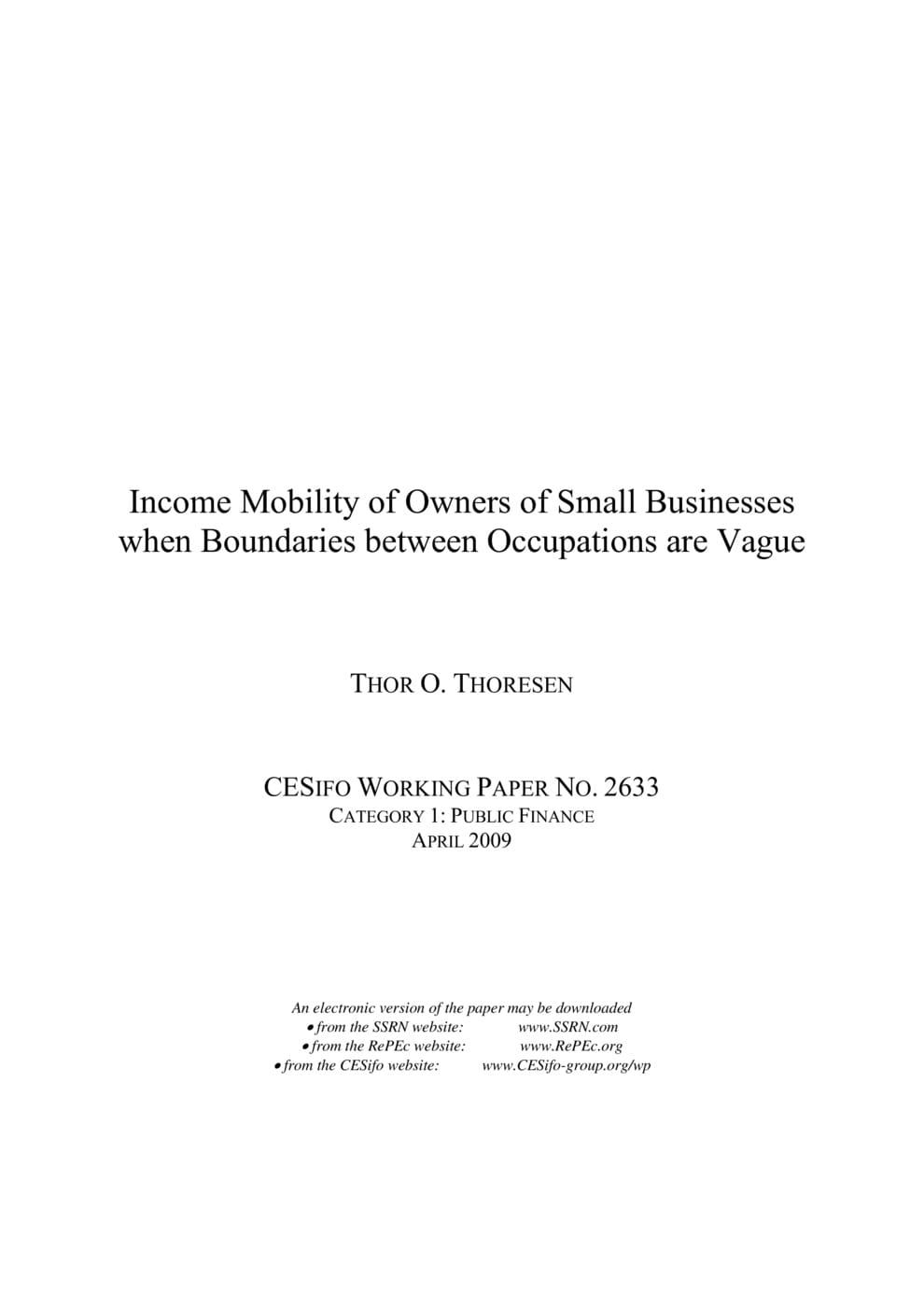Income Mobility of Owners of Small Businesses when Boundaries between Occupations are Vague
CESifo, Munich, 2009
CESifo Working Paper No. 2633

Ownership of small businesses can facilitate upward mobility through the income hierarchy and help individuals maintain a place at the higher end of the income distribution hierarchy. This paper compares the positional stability of owners of small businesses with that of wage earners, arguing that describing the relative position of different occupations faces definitional challenges. For instance, the Norwegian dual income tax system encourages owners of small businesses to establish widely held firms, with themselves as employees, because it reduces the tax burden and increases post-tax income. Descriptions of income distribution mobility of different occupations are therefore in danger of being misleading if such occupational measurement problems are not taken into account. I discuss in this paper the income mobility of owners of small firms in Norway 1993–2003 by estimating income transition models for different definitions of occupational status. Business ownership facilitates upward mobility and helps owners maintain a place at the top of the income distribution scale, and wider definitions of what counts as a small business owner enhance these correlations. However, as the paper shows, business owners are more mobile than wage earners and therefore overrepresented at the lower and higher ends of the income distribution ranking, irrespective of definition.
Public Finance